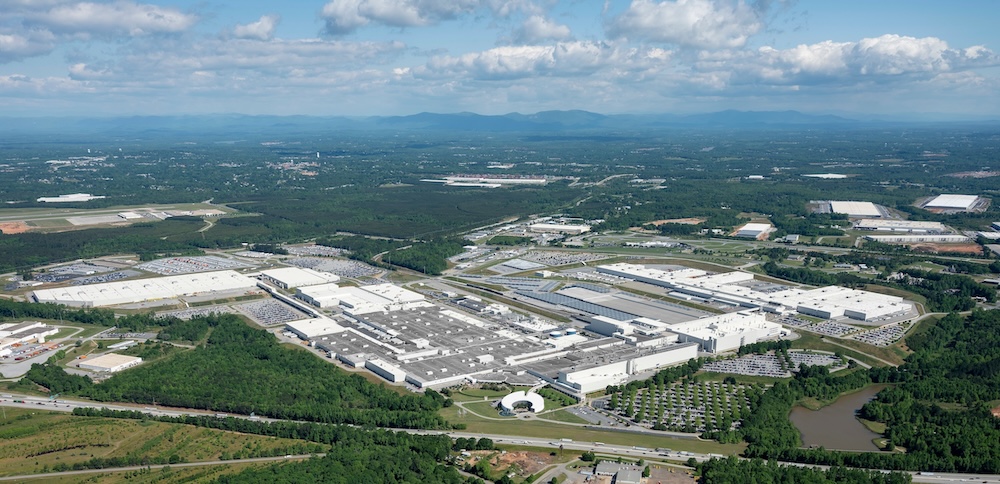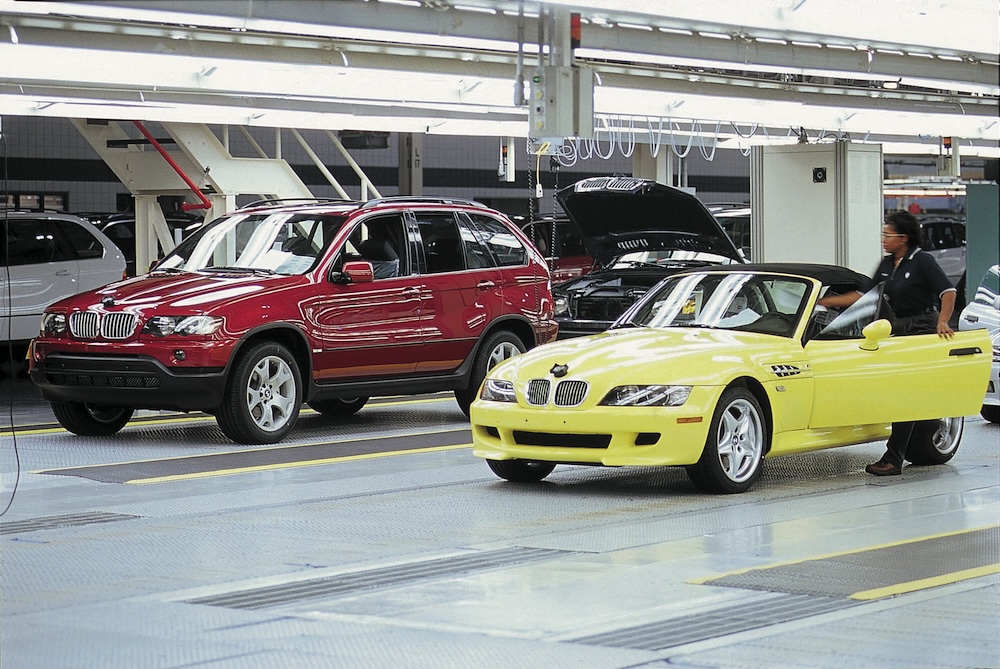4/21/2025

In 1992, BMW made a transformative decision that would not only redefine its global manufacturing strategy but also invigorate the American South's industrial landscape. By selecting Spartanburg, South Carolina, as the site for its first full production plant outside Germany, BMW embarked on a journey that has, over three decades, yielded profound economic, technological, and cultural impacts.
 BMW Group Plant Spartanburg Aerial 2024.
BMW Group Plant Spartanburg Aerial 2024.Fred Rollison Photography
Spartanburg: The Genesis of BMW's American Dream
The choice of Spartanburg was strategic. With its robust infrastructure, including proximity to major rail lines and the Port of Charleston, and a skilled workforce supported by 16 technical colleges, South Carolina presented an ideal environment for BMW's expansion. Governor Carroll Campbell's proactive approach, including facilitating the relocation of 250 homeowners to accommodate the plant, exemplified the state's commitment to this partnership.
Groundbreaking took place on September 30, 1992, marking the beginning of a new era. By 1994, the plant produced its first vehicle, a BMW 318i, symbolizing the successful fusion of German engineering and American craftsmanship.
 Press Conference Announcement BMW Group Plant Spartanburg. Bernd Pischetsrieder and Governor Carroll A. Campbell Jr. 06.23.1992.
Press Conference Announcement BMW Group Plant Spartanburg. Bernd Pischetsrieder and Governor Carroll A. Campbell Jr. 06.23.1992. Economic Catalyst: BMW's Impact on South Carolina
BMW's investment in Spartanburg has been a significant economic driver. With over $14.8 billion invested, the plant employs more than 11,000 associates and supports nearly 43,000 jobs statewide. Its annual economic impact is estimated at $26.7 billion, reflecting the extensive network of suppliers and service providers that have emerged around the plant.
The plant's production capacity has grown to 450,000 vehicles annually, making it BMW's largest manufacturing facility worldwide. In 2024 alone, Spartanburg exported nearly 225,000 vehicles valued at over $10 billion, solidifying its status as the leading U.S. automotive exporter by value for over a decade.
Pioneering Sustainability and Innovation
BMW's Spartanburg plant is a model of sustainable manufacturing. Since 2003, it has utilized methane gas from the nearby Palmetto Landfill to generate electricity and hot water, reducing CO₂ emissions by over 9,200 tons annually. The plant also conserves approximately 9.5 million gallons of water each year through innovative water management practices.
Technological advancements are integral to the plant's operations. The integration of cooperative robots, exoskeletal supports for workers, and digitalized logistics systems exemplify BMW's commitment to combining human expertise with cutting-edge technology.
 Z3 and X5 share an assembly line 2002.
Z3 and X5 share an assembly line 2002.
Community Engagement and Workforce Development
BMW's influence extends beyond manufacturing. The company has donated over $40 million to educational, cultural, and civic programs across South Carolina. Initiatives like the BMW Scholars Program offer students the opportunity to gain hands-on experience while pursuing their education, fostering a pipeline of skilled workers for the future.
Looking Ahead: BMW's Vision for the Future
As BMW approaches the production of battery-electric variants of its X models in 2026, the Spartanburg plant is poised to play a pivotal role. A new $700 million battery assembly facility in nearby Woodruff will support this transition, underscoring BMW's commitment to innovation and sustainability.
BMW's journey in Spartanburg is a testament to the power of strategic investment, community collaboration, and a shared vision for the future. It stands as a beacon of what can be achieved when global ambition meets local dedication.
For more information on BMW's initiatives and opportunities, visit their official Spartanburg Plant website.
